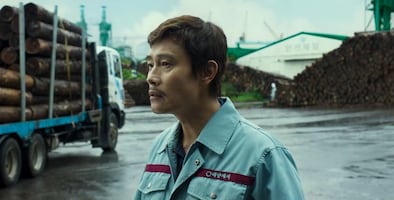Marriage equality
and love between same-sex couples have in artist Enrique Díaz the best ally against homophobia.
On July 11, the Mexican Supreme Court of Justice (SCJN) approved through an allegation of unconstitutionality, the legal union between same-sex couples in Chiapas. In this context, the visual proposal of this Chiapas-native artists has captured the attention of a society that has just begun to open up to diversity.
The paintings of Díaz on homosexuality break down taboos and promote discussion on the matter. His protagonists are indigenous women dressed in traditional dresses, kissing nonchalantly, and Tzotzil men with hats and ribbons – symbols of virile authority in this region – boldly caressing each other.
The chromatic strokes of the painter delve into the culture of the Zapatista Army of National Liberation (EZLN, in Spanish) and depict a female couple encouraged by the strength of equal love.
Inclusion.
Dressed in a guerilla fighter outfit, a woman holds another, dressed in a white wedding dress. Both hold a rifle that doesn't shoot bullets, but multicolored flowers. The flowers, according to the artists, symbolize mestizo and interracial inclusion and peaceful coexistence. The image is part of the “ La revolución la hacemos tod@s ” (We're all the revolution), one of the most representative works of Díaz. The collection is a series of oil-on-canvas paintings and linoleum engravings of female and interracial couples.
The aesthetic proposal of the painter depicts voluptuous bodies in love poses which reflect demands of freedom, respect, and tolerance towards sexual diversity.
Díaz, who is also a sculptor, considers marriage equality and sexual diversity are a reality in Chiapas but are lived and watched from half-closed doors.
He claims cities are more tolerant than rural and indigenous communities, where customs and tradition prevent sexual freedom. Those who fight for these rights face ostracism and rejection, he says for an interview with EL UNIVERSAL .
This reality further complicates, according to the painter, because artists don't broach the subject freely, including femicides, pederasty, human trafficking, immigration, environmental pollution, and political impunity and corruption.
“There isn't enough awareness to understand that in the fight for human rights we must all be involved; achievements and victories belong to us all, even those who oppose,” says the artists confidently.
Debate.
This month, the Court approved same-sex marriages without recourse to appeal. The ministers invalidated two articles from the Civil Code of Chiapas which established that marriage had to be between a man and a woman and that its purpose was the continuity of the species.
This resolution was condemned by the Diocese of San Cristobal de Las Casas. Bishop Felipe Arizmendi Esquivel said this jurisdictional resolution is “a new blow against the institution of marriage” because it allows homosexual individuals to be joined by law, “in what they pretend to call marriage”.
He claimed homosexual unions are not marriages in the natural sense. They could be a consensual and legal union recognized by the law of two people of the same sex, which provides some rights, such as mutual assistance, inheritance rights, or ownership of goods and services, but it's not a real marriage, according to the bishop.
Different United Civil Association (UDAC, in Spanish) qualified marriage equality in Chiapas as a triumph, after three years of legal battle.
The Court approved the lawsuit claiming unconstitutional action 32/2016, promoted by the UDAC, which invalidated articles 144 and 145 of the Civil Code which forbade same-sex marriage. Héctor Estrada, one of the Association's spokespersons, said it's very likely that the first same-sex weddings take place during August this year.
am
Noticias según tus intereses
[Publicidad]
[Publicidad]














